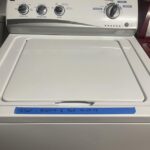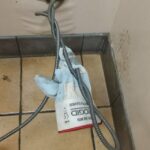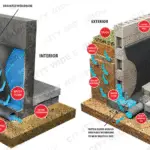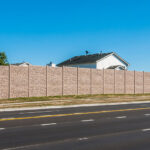Imagine stepping into your basement and finding it transformed into a usable, dry space. No more worrying about leaks or dampness seeping in, ruining your precious belongings or turning your dream space into a nightmare.
You want to make the right choice between interior and exterior basement waterproofing, but how do you decide which is best for you? This article is your guide to understanding the differences, benefits, and potential drawbacks of each method. By the end, you’ll have the clarity you need to make a confident decision, ensuring your basement stays dry and secure for years to come.
Dive in and discover the best waterproofing solution tailored to your needs.
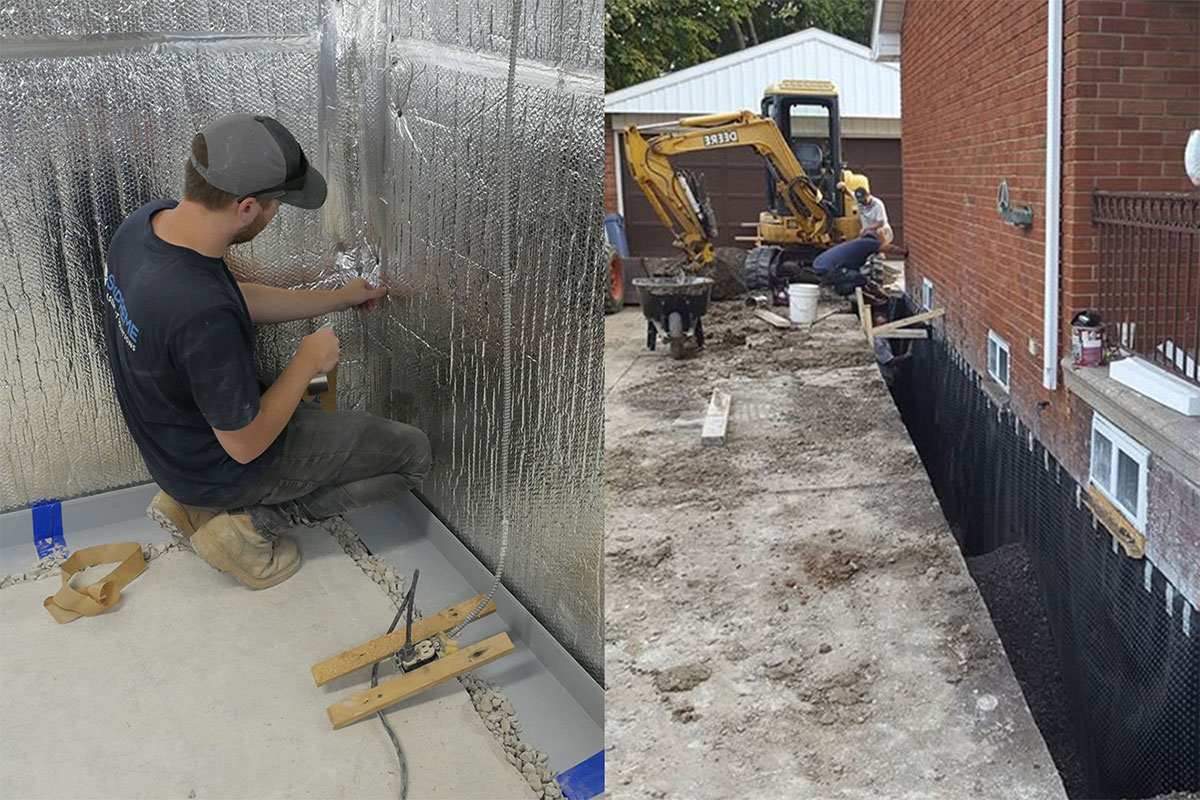
Credit: supremebasements.com
Interior Basement Waterproofing
Interior basement waterproofing is a popular method to protect your basement from water damage. This approach focuses on managing and redirecting water that has already entered your basement space. If you’ve ever dealt with a soggy basement, you know how frustrating it can be. Imagine walking down to the basement, only to find your storage items floating. That’s where interior waterproofing steps in to save the day.
Methods And Techniques
Various methods are available to keep your basement dry from the inside. One common technique involves installing a drainage system along the walls and floors. Think of it as guiding water to where it should go—away from your belongings. Sump pumps are another essential tool; they actively remove water that collects in the basement. You might also consider sealants and coatings applied to walls, which help resist moisture. These techniques offer a practical way to manage water that sneaks in.
Pros And Cons
Interior waterproofing has its pros. It’s often less disruptive since the work is done inside your home. You won’t have to worry about tearing up your yard. Plus, it’s usually quicker to implement. However, there are cons to consider. It doesn’t prevent water from entering the basement; it only addresses the water that’s already inside. If you have a significant water issue, you might find yourself constantly relying on systems like sump pumps.
Common Materials Used
Interior waterproofing employs a variety of materials. Sealants and waterproof paints are widely used to coat walls and floors. For drainage systems, you’ll encounter PVC pipes and gravel, which help channel water away. Sump pumps, made from durable materials, are crucial in managing water levels. These materials are readily available and effective in keeping your basement dry.
Cost Considerations
Budgeting for interior waterproofing is essential. The costs can vary based on the size of your basement and the severity of the water issue. Installing a sump pump might set you back a few hundred dollars, while comprehensive drainage systems could be more expensive. It’s wise to get multiple quotes and evaluate the long-term benefits. Are you prepared to invest in peace of mind and protect your home from water damage? Consider the potential savings from avoiding water-related repairs.

Credit: mar-flex.com
Exterior Basement Waterproofing
Exterior basement waterproofing is a critical step in protecting your home from water damage. This process involves adding protective layers and drainage systems outside your basement walls to keep moisture at bay. If you’re considering this approach, it’s essential to understand the different methods, materials, and costs involved.
Approaches And Strategies
There are several ways to tackle exterior basement waterproofing. One common method is installing a drainage system around the perimeter of your home. This typically includes a French drain, which directs water away from the foundation.
Another strategy is applying waterproof coatings to the exterior walls. These coatings act as a barrier, preventing water from seeping through. You might also consider grading the land around your foundation to naturally divert water.
Advantages And Disadvantages
Exterior waterproofing provides a long-term solution. It addresses the problem at the source by stopping water before it enters your basement.
However, the process can be invasive. It often involves excavating around your home, which can disrupt landscaping and outdoor structures. This can be a concern if you have a beautiful garden or patio.
Materials And Technologies
Various materials are used in exterior waterproofing. Bituminous coatings are popular for their durability and effectiveness. These are applied directly to the exterior walls.
Advanced technologies like waterproof membranes offer flexibility and strength. They adapt to shifts in your foundation, providing continuous protection. Additionally, drainage tiles are used to guide water away efficiently.
Expense Analysis
Exterior basement waterproofing can be costly. On average, it ranges from $5,000 to $15,000, depending on the size of your home and the complexity of the project.
While this might seem steep, consider the value it adds to your property. You save on potential repair costs from water damage, which can be far more expensive. Is this investment worth the peace of mind it brings?
When deciding on exterior waterproofing, weigh the benefits against the costs. Think about your home’s needs and your budget. Taking the time to protect your basement now can save you from headaches down the road.
Comparing Interior And Exterior Waterproofing
Choosing between interior and exterior basement waterproofing involves different strategies. Interior waterproofing manages water inside the basement. Exterior waterproofing prevents water from entering. Each method offers unique benefits, tailored to specific needs and conditions. Understanding these options helps homeowners make informed decisions for effective basement protection.
When you think about keeping your basement dry, you might wonder about the difference between interior and exterior waterproofing. Both methods aim to prevent water from causing damage, but they tackle the problem from different angles. Understanding the benefits and challenges of each can help you make the best decision for your home.Effectiveness And Longevity
Interior waterproofing is generally easier to install and can be quite effective at redirecting water that has already made its way inside. However, it primarily manages water after it has entered your home, which might not be the best long-term solution for severe water problems. Exterior waterproofing, on the other hand, addresses the issue from the outside, preventing water from entering in the first place. It’s often more effective and longer-lasting because it stops water at the source. However, it requires more extensive work and can be more expensive initially.Installation Complexity
Interior waterproofing usually involves installing a drainage system and sump pump inside your basement. This can often be done without major disruptions to your property. It’s a task that many homeowners choose to take on themselves. Exterior waterproofing involves excavating around the foundation to apply a waterproof membrane. This process can be complex and time-consuming, often requiring professional assistance. It might be a challenge for homeowners who don’t want to disturb their landscaping.Maintenance Requirements
Interior systems often need regular maintenance, like checking the sump pump and cleaning out drains. These tasks are manageable but need consistent attention to ensure everything works smoothly. Exterior systems are generally more maintenance-free once properly installed. However, if issues arise, they can be more complicated and costly to fix due to their location underground.Budget Implications
Interior waterproofing tends to be more budget-friendly upfront, making it an attractive option for many homeowners. It’s a practical choice if you need a quick solution without a large initial investment. Exterior waterproofing, while more costly initially, can save money in the long run by preventing water damage before it starts. It’s worth considering if you’re planning to stay in your home for a long time and want a more permanent solution. When deciding between interior and exterior waterproofing, consider your specific needs and resources. What level of disruption can you handle? How much are you willing to invest now versus later? Your answers will help guide you to the right choice for keeping your basement dry and safe.Choosing The Right Method
Choosing the right waterproofing method for your basement is crucial. It protects your home from water damage. Two main methods exist: interior and exterior waterproofing. Each method has unique benefits and challenges. Understanding your basement’s needs helps in making the best decision.
Assessing Basement Conditions
First, evaluate your basement’s current state. Check for visible cracks or leaks. Notice any signs of mold or mildew. These signs might indicate severe water issues. A thorough inspection helps in identifying problem areas. This aids in choosing the right waterproofing solution.
Climate And Environmental Factors
Weather plays a big role in basement waterproofing. Areas with heavy rainfall need more robust solutions. Cold climates might cause water to freeze and expand. This could lead to structural damage. Understand your local weather patterns. It helps in selecting the most effective method.
Professional Recommendations
Experts can provide valuable insights. They assess your basement conditions accurately. Professionals suggest the best methods based on their expertise. Their recommendations often prevent future issues. Consulting with a professional ensures a long-lasting solution.
Diy Vs Professional Services
DIY waterproofing can be cost-effective. It suits minor issues and simple fixes. Yet, it requires time and effort. Professional services offer guaranteed results. They handle complex problems efficiently. Consider your budget and the problem’s severity. This helps in deciding between DIY and hiring a professional.

Credit: www.basementfix.com
Frequently Asked Questions
What Is Basement Waterproofing?
Basement waterproofing prevents water from entering your basement. It protects your home from water damage.
How Does Interior Waterproofing Work?
Interior waterproofing manages water inside your home. It uses drainage and sealants to keep basements dry.
What Is Exterior Waterproofing?
Exterior waterproofing stops water outside your home. It involves soil excavation and installing barriers.
Which Waterproofing Is More Effective?
Both methods are effective. Exterior is more thorough. Interior is easier and less costly.
Can I Diy Basement Waterproofing?
DIY is possible for minor issues. Major problems often need professional help for best results.
Conclusion
Choosing the right basement waterproofing is crucial for your home’s health. Interior solutions manage water already in. Exterior methods stop water from entering. Both have benefits. And limitations. Interior options are often cheaper and easier to install. Exterior solutions provide long-term protection.
It’s important to assess your specific needs and budget. Consult a professional for tailored advice. Protect your basement. Maintain your home’s value. Avoid costly repairs. Understanding these options ensures your home stays dry and safe. Make an informed choice today.
Enjoy peace of mind. A dry and secure basement awaits.


